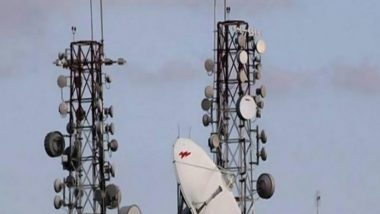New Delhi, May 17: As the world is celebrating World Telecommunication and Information Society Day, also known as WTISD today, it is useful to delve into the journey of telecom expansion in India. The country boasts a 99 percent coverage footprint in 4G, with over 6 lakh villages covered and about 4.42 lakh 5G BTS, according to the data released by the Ministry of Communications.
The evolution of the telecom industry in India can be categorized into 3 parts, the first stage till 1990 during the state-owned era, the second, 2000, which marked the advent of private players; and, the third stage from 2000 to 2010 and till date. Telecommunications Bill 2023 Passed in Rajya Sabha Through Voice Vote, Paves Way for Elon Musk’s Starlink, OneWeb and Others.
Indian telecom sector, owned by the state, began services with a manual telephone exchange in 1882 in Kolkata. The telecom industry flourished only after the Department of Telecommunication (DoT) was separated from the Indian Post and Telecommunication Department in 1985. DoT started running as a model agency for telecom services of the entire country till 1986.
In the following years, the government created MTNL and VSNL for telecom operations in metro cities like Delhi and Mumbai.Subsequently, MTNL and VSNL were carved out of the Department of Telecommunication (DoT) for the separation of its policy functions and telecom operations in metro cities like Mumbai and Delhi and International long-distance operations.
This gives rise to the 2nd part of the telecom industry in India in which the government allows private players to enter the Telecom Industry. Cellular services were first launched in 1995 in Kolkata.Another milestone during this era was the formation of telecom regulator TRAI in 1997. Union Communications and IT Minister Ashwini Vaishnaw Says Eight Large Investment Firms Exploring Investment in Telecom Sector.
TRAI was formed to regulate the fair environment between operators and subscribers.In 2000, TDSAT was constituted to settle disputes between operators, between operators and the government, and between operators and subscribers.After March 2000, the government became more liberal and issued more licenses with reduced license fees.
This starts the 3rd stage of the telecom industry, which was marred with controversies. Ultimately the supreme court cancelled 122 telecom licences.But the third stage of the telecom sector saw phenomenal growth as in 2005 the 2G revolutionised the telecom market and a number of mobile connections grew significantly.
The government increased the foreign Direct Investment (FDI) limit in the telecom sector from 49% to 74%, in the same year.Another significant revolution came in 2008 and 2012 when 3G and 2G services were introduced respectively. This brought in mobile advertising, mobile commerce, video calling, streaming, full movie download, live TV, and multi-player gaming to the small mobile phone screens.After 2G, 3G and 4G, the 5G is now has ushered in the country and India has become world leader in adopting 5G.
The country is now preparing for 6G wireless broadband technology, with commercial deployment expected around 2030.Commenting on the day Lt Gen. Dr. SP Kochhar, Director General, COAL said, "Both 5G and the future 6G are poised to bring in improved energy efficiency in the networks, despite higher power consumption due to the densification requirements of the networks. The Indian telcos are increasingly adopting green telecom networks, which focus on energy-efficient operations, carbon emission reductions and the use of renewable energy sources."
Anku Jain MD of MediaTek India said, "India has demonstrated a strong focus on innovation, possibilities, and inclusive growth in its telecom journey from, 5G adoption to technological breakthroughs"With rapid growth of telecom subscribers India has now become the manufacturing hub for mobile phones. Samsung has set up world's largest mobile manufacturing unit in India while Apple has world's second largest unit in India. Tarun Chhabra, Country Manager, Nokia India says, "India is on the cusp of a digital revolution with its pioneering initiatives in the adoption of AI and also taking the right steps in establishing its 6G leadership."With AI and innovations coming in India's telecom sector has a long way to go.
(This is an unedited and auto-generated story from Syndicated News feed, LatestLY Staff may not have modified or edited the content body)













 Quickly
Quickly




















